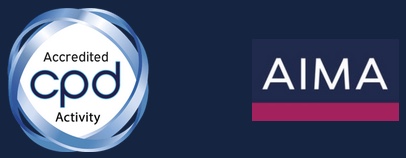A particular aspect of the UK regulatory environment is that financial institutions can be classified in a number of different ways. For example, it’s possible for a firm to be classified as an FCA-regulated firm, an investment firm, a portfolio manager, a small CASS firm and an ‘IFPRU’ firm – amongst others!
The Senior Managers and Certification Regime (“SMCR”) has introduced further categorisations, and these are not always intuitive. This article seeks to explain how the different categories fit together, and to facilitate the task of identifying a financial institution’s SMCR categorisation.
Why are there different categories?
There are almost 60,000 entities that are authorised and regulated by the UK’s financial services regulators. These range from some of the world’s largest financial institutions to very small and uncomplicated businesses comprising one individual.
Whilst the ‘high-level’ aims of SMCR are a constant, the specific requirements are applied in a proportionate manner dependent upon perceived conduct risk. Hence, for example, HSBC is subject to more stringent requirements than a small car dealership that offers consumer credit. Dividing financial institutions into the various categories aims to apply this proportionality in a way that is both fair and effective.
Dual-regulated v Solo-regulated firms
The first way of categorising firms is by how they are regulated. In the UK there are two financial services regulators – the Prudential Regulation Authority (“PRA”) and the Financial Conduct Authority (“FCA”). Systemically important firms are authorised by the PRA and regulated by the FCA – these firms are known as ‘dual-regulated’ firms and include banks, building societies, credit unions and insurers. All other firms are authorised and regulated by the FCA – these firms are ‘solo-regulated’ firms.
SMCR was introduced for such firms as follows:
| Dual-regulated firms: banks, building societies and credit unions | March 2016 |
| Dual-regulated firms: insurers | December 2018 |
| Solo-regulated firms | December 2019 |
Dual-regulated firms are generally considered to have higher conduct risk compared to solo-regulated firms. Hence, such firms were subject to SMCR at earlier dates, and are subject to more detailed requirements.
Solo-regulated firms: Enhanced Firms, Core Firms and Limited Scope Firms
There are almost 60,000 solo-regulated firms, and these are subject to further categorisation. A majority of these fall into three categories reflecting their activities and perceived conduct risk:
| Enhanced Firms | Higher risk |
| Core Firms | Medium risk |
| Limited Scope Firms | Lower risk |
Determining which category a solo-regulated firm fits into is not a straightforward task. The FCA has published a firm classification diagram, replicated on the SMCR Compliance website, which provides a useful starting point. However as with many aspects of financial regulation the devil is very much in the detail. Set out below is some additional guidance on how to work out into which category a solo-regulated firm belongs.
Limited Scope Firms vs Core and Enhanced Firms:
There is a dichotomy between Limited Scope firms on one hand, and Core and Enhanced firms on the other.
Limited Scope firms comprise a discrete population of firms i.e. a firm has been identified as Limited Scope by virtue of the activities that it conducts.
For other firm types, the ‘default’ is that the firm is classified as a Core firm. However, certain firms – typically larger firms – will instead fall into the Enhanced category by virtue of various criteria that will be explored in greater detail later in this article.
Limited Scope Firms:
There are seven categories of Limited Scope firm:
- Certain consumer credit firms
- Certain firms whose principal purpose is other than carrying out FCA regulated activities and that are one of the following: oil market participant; service company; energy market participant; wholly owned subsidiary of a local authority or a registered social landlord; or certain firms carrying out insurance distribution activity.
- A sole trader.
- A not-for profit debt advice body.
- An authorised professional firm whose only regulated activities are non-mainstream regulated activities.
- An ‘internally managed alternative investment fund’ that is both a body corporate and not a collective investment scheme.
- Certain claims management firms.
Of these a majority of Limited Scope firms fall into the first category which comprises ‘limited permission’ consumer credit firms. This is broadly defined as a consumer credit firm that performs one or more of the following activities:
- consumer hire (such as tool and car hire)
- credit broking (other than by a domestic premises supplier) where the sale of goods or non-financial services is the main business, and broking is a secondary activity designed to help finance the purchase of those goods or services (e.g. certain motor dealerships and high-street retailers that introduce customers to a finance provider)
- credit broking in relation to consumer hire or hire purchase agreements
- lending where the sale of goods or non-financial services is the main business, and there is no interest or charges and the agreements are not hire-purchase or conditional sale agreements (e.g. certain golf clubs or gyms allowing deferred payment for membership)
- consumer credit lending by local authorities (where lending is within the scope of the Consumer Credit Directive).
- not-for-profit bodies providing debt counselling and/or debt adjusting, including those who also provide credit information services
NB: If a firm carries on lending, secondary broking and/or consumer hire activities under a limited permission, the firm can also apply to carry on limited permission debt counselling, debt adjusting and providing credit information services.
Core and Enhanced Firms:
There are a wide variety of firm types that fall into either the Core firm category or the Enhanced firm category. These include (but are not limited to) the following:
- Investment firms, including:
- Asset managers
- Investment advisers (including independent financial advisers and wealth managers)
- Corporate finance advisers
- Brokers/traders
- Market makers
- Mortgage brokers
- Insurance brokers
- Certain consumer credit firms that do not fall into the Limited Scope category, including:
- credit broking where introducing customers to lenders or brokers is a main business activity
- credit broking where the sale of goods or services takes place in the customer’s home (such a supplier is known as a ‘domestic premises supplier’)
- debt administration and debt collection
- debt counselling and debt adjusting on a commercial basis
- lending which is not limited permission (such as lending in relation to personal loans, credit cards, overdrafts, pawnbroking, hire-purchase or conditional sale agreements)
- providing credit information services
- providing credit references
- operating an electronic system (peer-to-peer lending)
Enhanced Firms:
On account of them having higher perceived conduct risk, Enhanced firms are subject to requirements that are most similar to those for dual-regulated firms.
A firm falls into the Enhanced firm category where it meets one or more of the following six conditions:
Definitional criteria:
- A firm that is a Significant IFPRU firm (this is the firm’s FCA prudential category, and indicates that the firm is large and/or complex).
- A firm that is a CASS Large firm (a firm holding client money of over £1 billion or client assets of over £100 billion).
Criteria calculated on a rolling average:
- Firms with Assets Under Management of £50 billion or more as a 3-year rolling average.
- Firms with current total intermediary regulated business revenue of £35 million or more per annum calculated as a 3-year rolling average.
- Firms with annual revenue generated by regulated consumer credit lending of £100m or more calculated as a 3-year rolling average.
Criteria calculated as a point in time
- Mortgage lenders and administrators (that are not banks) with 10,000 or more regulated mortgages outstanding at the latest reporting date.
Some other points
The above details the process for identifying the correct category for a majority of FCA regulated firms. There are some firm types that fall outside of this, including (but not limited to):
- Appointed Representatives (firms that are not FCA regulated but are attached to a FCA regulated firm and can perform certain regulated activities) fall outside of SMCR altogether;
- Firms such as payment services firms, that are not authorised under the Financial Services and Markets Act, also fall outside of SMCR altogether; and
- Branches of FCA solo-regulated firms, located in either the European Economic Area (EEA) or in a ‘third country’ outside of the EEA do not fall into one of the solo-regulated categories discussed above, but instead have their own category and associated requirements.
Our team of compliance experts are always here to help you connect the dots – please contact us should you have any further questions on how to categorise a financial institution under SMCR.
Alternatively, you can visit the SMCR Compliance website where you can find cost-effective and convenient SMCR e-Learning courses specific to your type of Firm and the types of functions you and your team might need.











